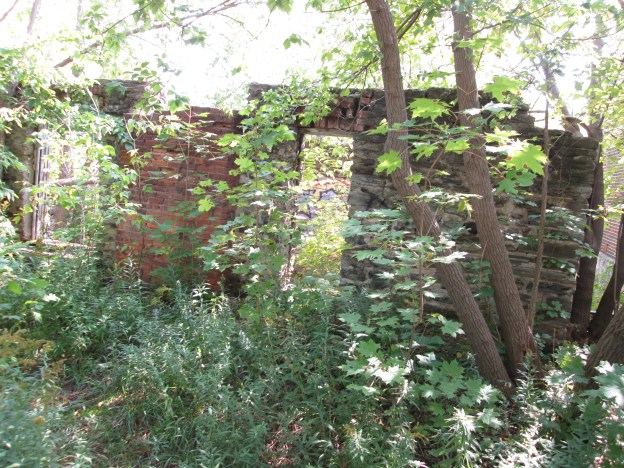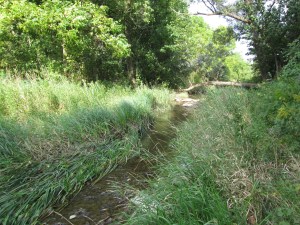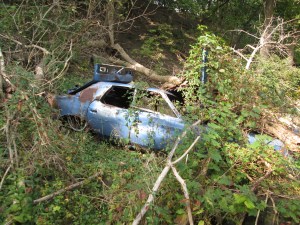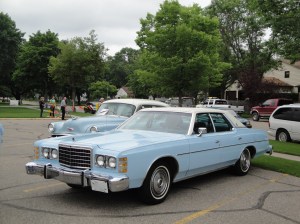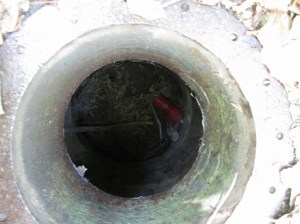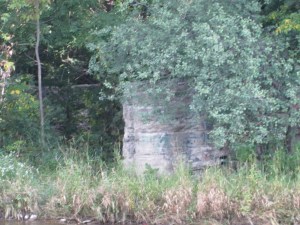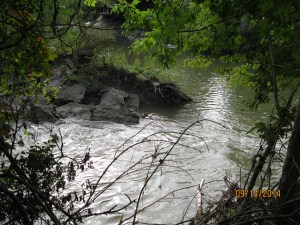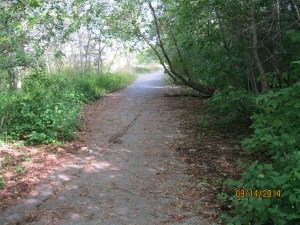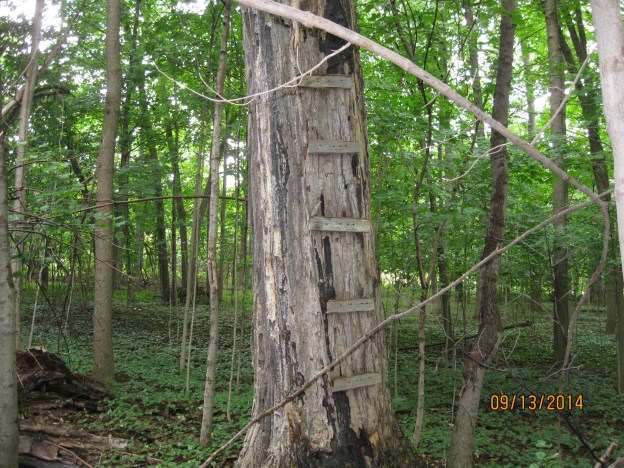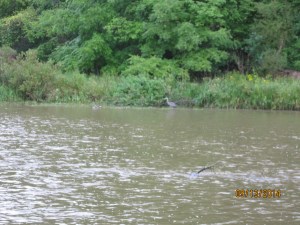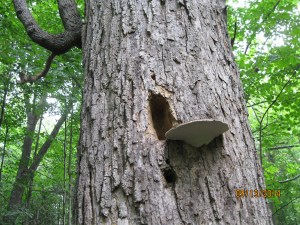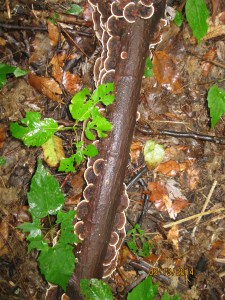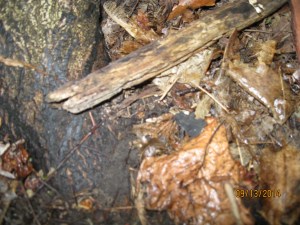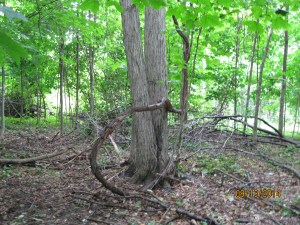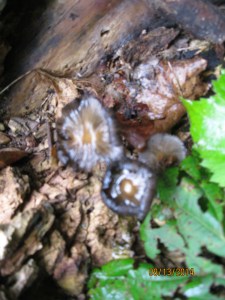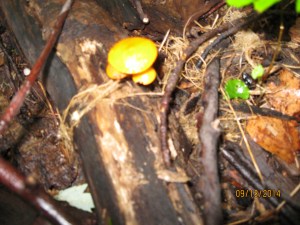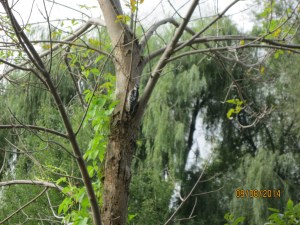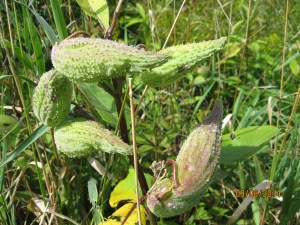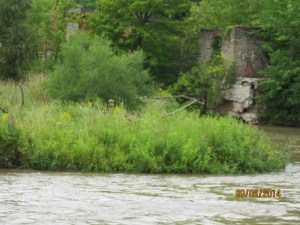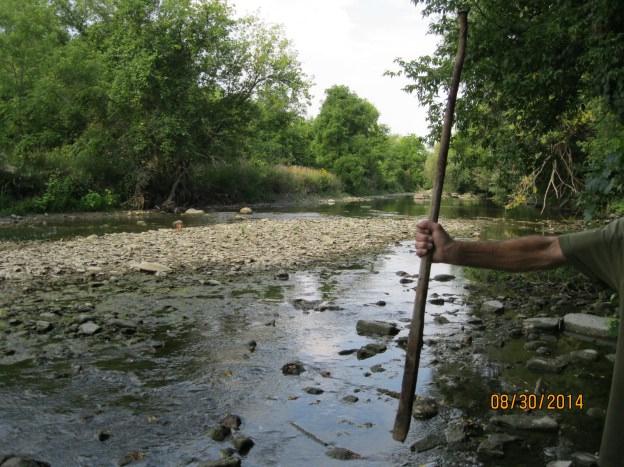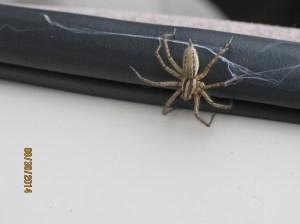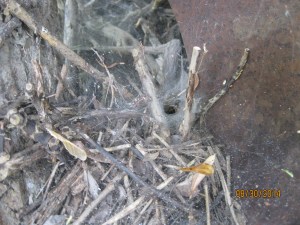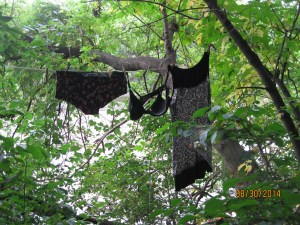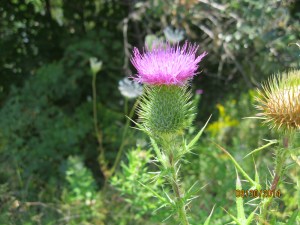Sat. Sep. 20, 2014
A beautiful morning for the final Saturday of summer. We parked on Mill street in Streetsville. Taking the little trail that heads north on the west side of the Credit River we passed through and area where the young bushes were cropped off a foot off of the ground. Deer had grazed as they made their way along the river bank. We followed them toward the walls of an old mill we had seen when we were in Riverside park a couple weeks ago.
At the mill site water was diverted from the stream or mill pond to the water wheel by a small stream that was usually man made. Where the water was brought to the wheel was called the head race. The water wheel, or later a turbine, was used to transfer the energy from the falling water to turn the gears inside the mill. This would drive the grinding wheels in a grist mill or the saw blades in a saw mill. The water was then returned to the river by means of the tail race. We found the tail race to the mill and knew that it would lead us there.
The remains of an old vehicle, likely a late 1940’s or early 1950’s, lay at the bottom of the hill. This car may have been here for quite a long time as it is damaged beyond identification.
A second car lies decaying in the same area. This car is in much better shape although it has been stripped clean of every usable part. The trunk lid still contains an old decal showing how to use the tire jack. From the part number on the decal we were able to identify this car as a 1977 Ford Galaxy 500. These two vehicles must have been dumped down here before the trees grew up on the embankment above. They may have been stolen and dumped down here or just abandoned here by their owners. Either way, it is hard to see why they were left here and not removed by the city. There is now a new acronym for those wishing to make fun of Fords. (F)ound (O)n (R)iver (D)rowned.
The car in the foreground of the picture below shows what the Galaxy 500 would have looked like when it was new.
Heman and Mary Hyde ran a large inn at Church and Main street for 40 years and this, along with proceeds from their saw mill, placed them among the wealthy in early Streetsville. Their son, John “Church” Hyde, built his own little merchant-miller empire. By 1840 he had built a mill on the west side of the river near the end of Church street. The mill expanded into a saw and grist mill, cooperage and stave factory. Staves are the thin wood boards which were used by a cooper to make barrels. He also built quarters for his workers at the mill site. In 1906 the mill was converted to produce hydro electricity for the town of Streetsville. It was Ontario’s first municipally owned power plant. The plant continued to be the source for power for the town until 1943 when Streetsville joined Ontario Hydro. The plant continued to provide auxiliary power until 1960 when it was shut down. In the photo below are two tunnels under the building where water was used to turn turbines.
There are two holes where shafts from the water turbines came up from these water tunnels below.
A steam pipe like the one below helped us to locate the Millwood Mills during a hike back in June. This also helps to identify this part of the mill as being of the newer 1906 construction.
The mill is designated as a heritage site because of the remaining door and window frames which can be seen in the cover photo. Since it is now intended to be preserved I find it odd that the interior of the mill is allowed to become overgrown with small trees. In a few years these trees will push over the walls and ruin this historical building.
When the mill was restored in 1906 a new dam was built across the Credit River. The foundations remain in a pattern of squares on the river bed.
Fall would officially begin a day later, but there was a hint of colour coming in some maple trees already and the sumac trees are bright red. Fall’s showcase of beauty is about to begin.
As we had hiked up the west side of the river we had seen the remains of yet another mill, this one on the east bank of the Credit river. Hmmm….
Google Maps link: Hyde Mill
Like us at http://www.facebook.com/hikingthegta
Follow us at http://www.hikingthegta.com
